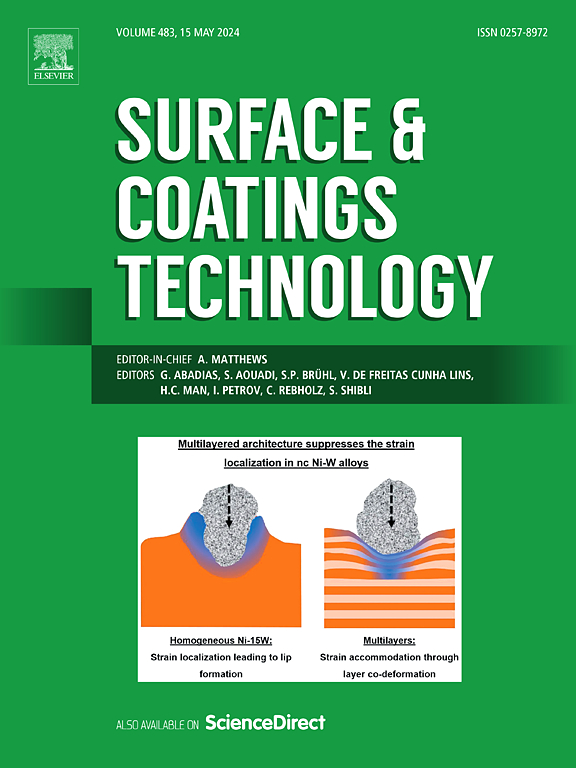Protective Ti sub-oxide coatings on proton exchange water electrolysis prepared by HiPIMS technology
IF 5.3
2区 材料科学
Q1 MATERIALS SCIENCE, COATINGS & FILMS
引用次数: 0
Abstract
Electrolysis, the process of splitting water into hydrogen and oxygen using electrical current, stands as a pivotal technology in the current hydrogen economy. Among various electrolyser technologies, proton exchange membrane water electrolysers (PEMWEs) are favored for their high efficiency, durability, and suitability for commercial applications. However, the cost of PEMWE systems, particularly the bipolar plates (BPs), which account for ∼25 % of system costs, remains a critical challenge. Stainless steel BPs has been explored as a cost-effective alternative to titanium BPs, but they require protective coatings to prevent corrosion under PEMWE conditions. This study focuses on developing titanium suboxide (Ti sub-oxide) coatings for stainless steel BPs to enhance corrosion resistance, maintaining a moderate contact resistance. Ti sub-oxide coatings were deposited using High-Power Impulse Magnetron Sputtering (HiPIMS), a technique enabling high-density and homogeneous material deposition. Key strategies to increase coating compactness, including substrate polarization and cyclic ion bombardment during deposition, were investigated. Morphological and compositional analyses were conducted, along with evaluations of corrosion resistance and electrical performance. The results demonstrate that Ti sub-oxide coatings developed with the selected approaches, exhibit improved compactness, which could potentially limit electrolyte infiltration, enhancing the durability and performance of stainless steel substrates. These findings highlight the promising behavior of Ti sub-oxide coatings under harsh PEMWE conditions. While further studies are needed in actual PEM electrolyzers, they suggest a cost-effective solution for advancing PEMWE technology and green hydrogen scalability toward Net Zero goals.

求助全文
约1分钟内获得全文
求助全文
来源期刊

Surface & Coatings Technology
工程技术-材料科学:膜
CiteScore
10.00
自引率
11.10%
发文量
921
审稿时长
19 days
期刊介绍:
Surface and Coatings Technology is an international archival journal publishing scientific papers on significant developments in surface and interface engineering to modify and improve the surface properties of materials for protection in demanding contact conditions or aggressive environments, or for enhanced functional performance. Contributions range from original scientific articles concerned with fundamental and applied aspects of research or direct applications of metallic, inorganic, organic and composite coatings, to invited reviews of current technology in specific areas. Papers submitted to this journal are expected to be in line with the following aspects in processes, and properties/performance:
A. Processes: Physical and chemical vapour deposition techniques, thermal and plasma spraying, surface modification by directed energy techniques such as ion, electron and laser beams, thermo-chemical treatment, wet chemical and electrochemical processes such as plating, sol-gel coating, anodization, plasma electrolytic oxidation, etc., but excluding painting.
B. Properties/performance: friction performance, wear resistance (e.g., abrasion, erosion, fretting, etc), corrosion and oxidation resistance, thermal protection, diffusion resistance, hydrophilicity/hydrophobicity, and properties relevant to smart materials behaviour and enhanced multifunctional performance for environmental, energy and medical applications, but excluding device aspects.
 求助内容:
求助内容: 应助结果提醒方式:
应助结果提醒方式:


